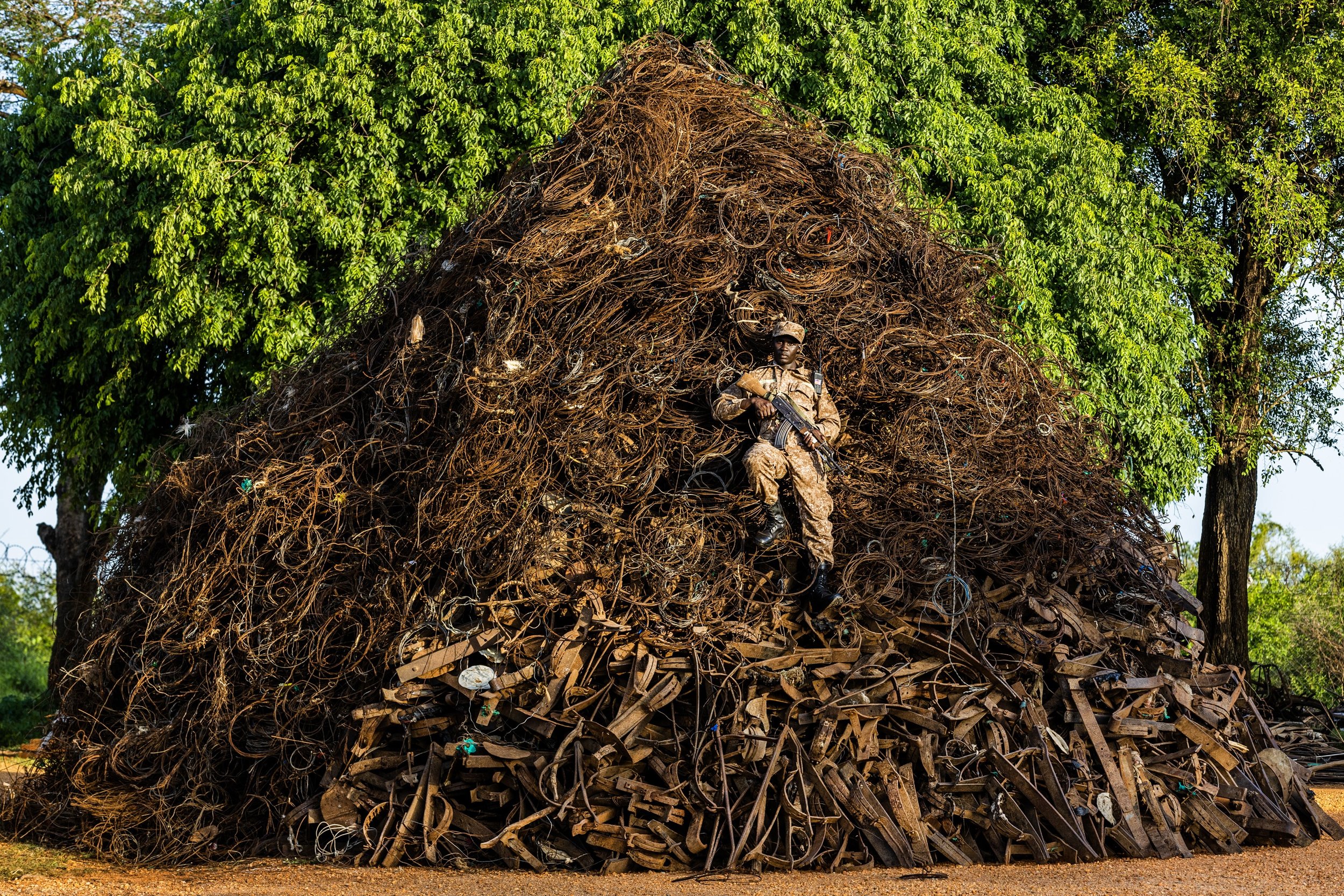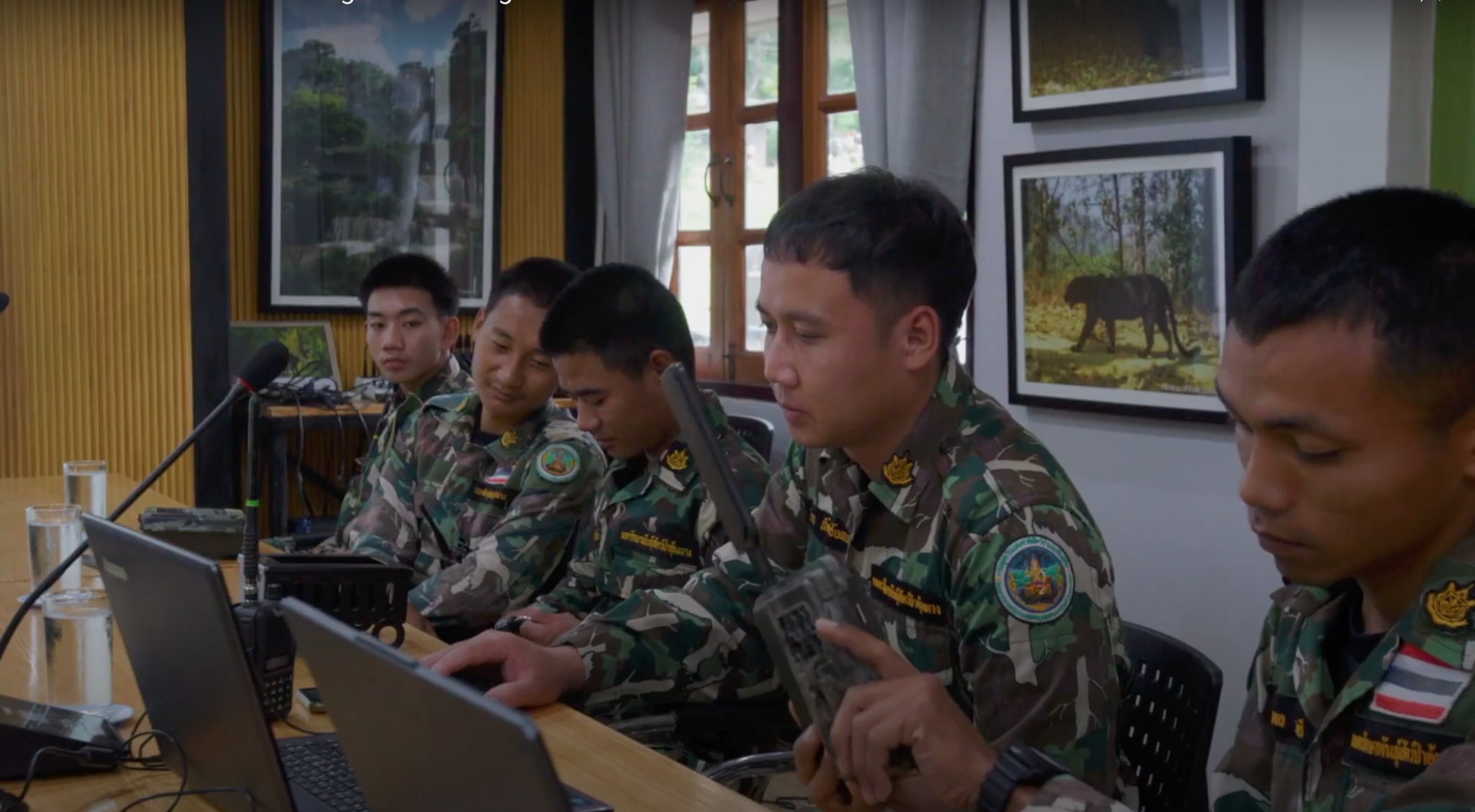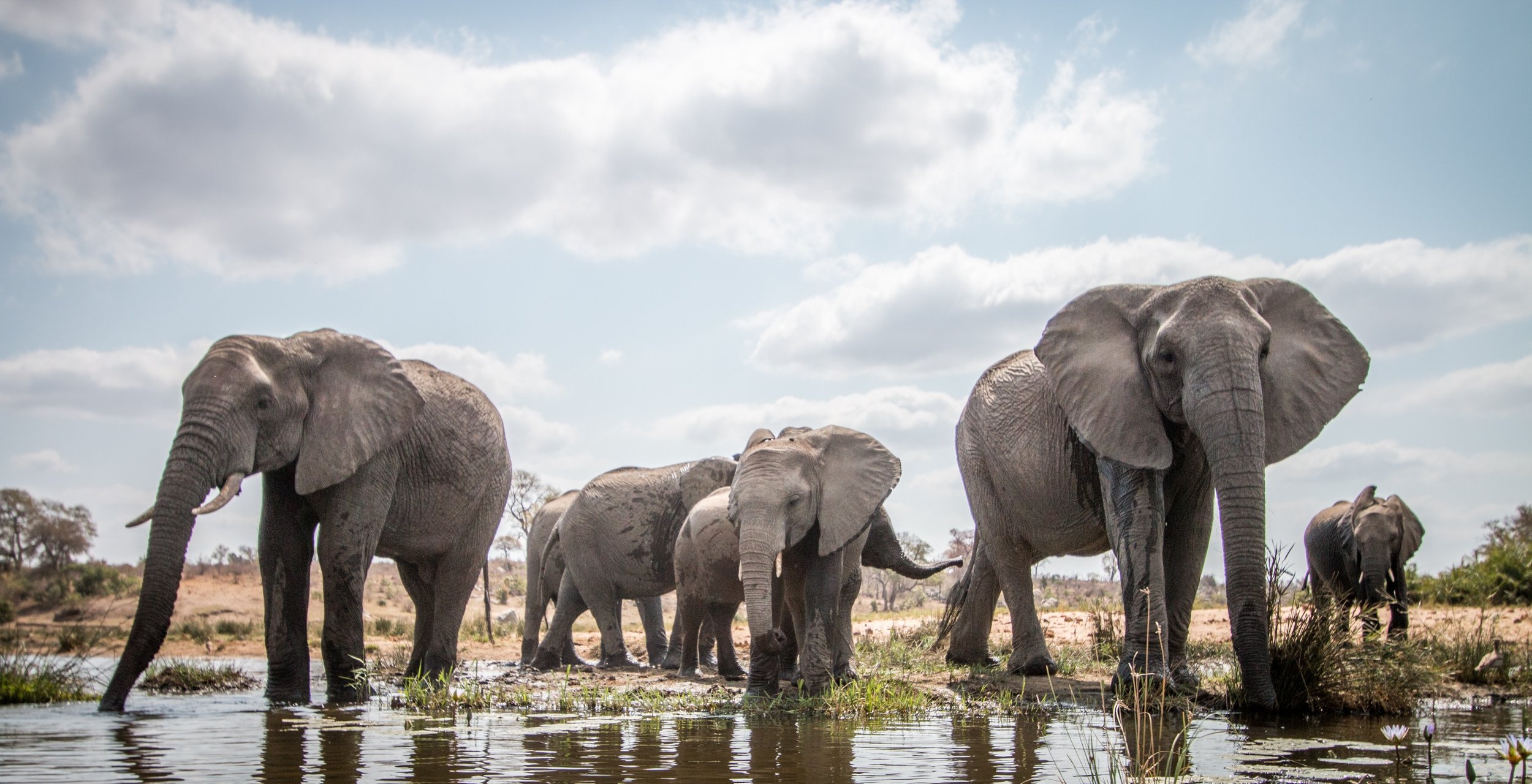Executive Director Jeff Morgan Featured in Forbes Interview
Rangers stand in front of thousands of snares at the Murchasion Falls National Park headquarters, Uganda. Photo by © Paul Hilton
FORBES INTERVIEW: As Ecotourism Booms, Conservation
Leader Says Global National Parks Need More Protection Now
Already valued at an estimated $185 billion, the worldwide ecotourism segment is expected to exceed $374 billion in global impact within the decade.
The number of travelers seeking out trips that engage with National Parks, Wildlife, Marine reserves, and Indigenous Territories has grown by nearly 18% since just last year, drastically increasing the number of visitors to places like Mana Pools National Park, Zimbabwe, Indonesia’s Komodo National Park, and Mirador National Park, Guatemala.
Komodo National Park
Together, National Parks in developing countries draw in tens of millions of tourists per year, but due to ineffective international funding for Park and Wildlife protection and in-country corruption, few National Parks receive the needed resources to protect their millions of acres of intact forests and wildlife habitats.
As the planet grapples with the consequences of massive deforestation, illegal logging, cattle ranching, illegal mining, and wildlife poaching, these magnets for ecotourism are critical bastions for keystone species like tigers, elephants, jaguars, chimpanzees, orangutans, and rhinoceroses and their intact forest ecosystems.
To help protect these vulnerable National Parks and Indigenous Territories in developing countries, the non-profit organization Global Conservation works with national park authorities and indigenous leaders to deploy Global Park Defense and Community Protection, providing rangers and local community patrols with the systems, equipment, and training they need to combat increasing threats from illegal loggers and wildlife poachers.
Global Conservation founder Jeff Morgan (left) says national parks across the planet need direct funding to protect vital habitats.
To learn more, we spoke with Global Conservation’s Executive Director Jeff Morgan, a Silicon Valley entrepreneur who has spent decades in the non-profit field working to protect the planet’s natural and cultural resources.
Joe Sills: Let’s first address the elephant in the room, the U.N.’s 30x30 goal. Is conserving 30% of the planet’s land and marine habitat by 2030 achievable, in your opinion?
Jeff Morgan: It is a critical goal if we want to reduce climate change. But, in reality, if we don’t do a good job protecting the current 3% of lands already declared “protected,” especially in developing countries—with real funding, systems, equipment, and training—I don’t see how 30x30 will be anything more than an empty slogan.
Sills: What obstacles do national parks in developing countries face that you feel would surprise fans of U.S. national parks like Yellowstone, the Grand Canyon, or Yosemite?
Morgan: U.S. and European national parks have incredible support from their governments, both national and state-level. In national parks where we work, like in Angola, Uganda, Guatemala, and Indonesia, national parks can barely pay the salaries of the few rangers they have, and patrolling operations have little support to stop illegal land clearing, logging, and wildlife poaching.
The rule of law is also a problem. Enforcement is rare, and justice is even more difficult as forest and wildlife crimes are low priority in most developing countries. The lack of funding is startling.
A typical U.S. national park like Sequoias National Park in California has a budget of over $18 million, while similar parks in Guatemala, Panama, Uganda, or Angola operate on less than $100,000 a year with just a few rangers protecting millions of acres. An impossible job.
There are no new Suburban trucks for the rangers, pressed uniforms, well-paved roads, or fancy lodges in developing countries. Most national parks are in very poor areas, and local communities lack the jobs, businesses, and benefits from tourism that are needed to convert poachers and illegal loggers from exploitation to conservation.
Still image taken from film produced by © Paul Hilton.
Sills: You’ve had boots on the ground all over the globe for the better part of ten years. Where are the hotspots today? Who needs the most help and why?
Morgan: The Amazon and Congo—these two tropical forests account for 60% of the planet’s carbon sequestration, though the areas protected by national parks and indigenous reserves are under 20% of the forest. Anything outside of national parks and indigenous reserves has little hope of protection. We focus on the very best national parks, and even they are being destroyed and not given the critical funding they need to survive.
Southeast Asia – Asia has been a real challenge. With some of the highest population growth and urban and agricultural development, very few forests are left to protect. We are working in Leuser Ecosystem, Sumatra, Indonesia; Cardamoms National Park, Cambodia; DaMaI Rainforest Complex in Borneo, Malaysia; and Bardiya-Banke National Parks in Nepal. These are some of the last intact tropical forests left in Asia and are critical to protect now.
Sills: Unlike a catch-all “GoFundMe” for wildlife. Global Conservation is actually equipping rangers in the field. What kind of tools do they need to protect endangered or threatened animals?
Morgan: What is really needed is a focused program of systems, equipment, and training for each endangered national park and indigenous territory. We call this Global Park Defense and Community Protection. Giving each country the reusable model and tools to protect their last intact forests is critical. Based on our five years investing in Thap Lan National Park in Thailand, the government decided to purchase over 3,000 cellular Trailcams and deploy SMART patrols in all of the national parks and wildlife reserves in the country. This is real progress.
Sills: What have been your organization’s greatest achievements so far? Biggest obstacles?
Morgan: Global Conservation is the only international NGO focused on the protection of national parks in developing countries.
That is scary.
I think having 100 percent focus on Park and Wildlife Protection is critical and having a repeatable methodology like Global Conservation’s Global Park Defense and Community Protection. With Global Conservation, any country or indigenous group can secure its national park or indigenous territory using basic consumer technology, free software, and readily available training and deployment support.
We have no mission creep - just protecting national park after national park. Whether it is a large landscape forest in Cameroon, or a marine park in Ecuador, the same systems, equipment, and training apply.
But most important is direct funding to the field. Global Conservation never funds government ministries. We only fund directly to on-the-ground NGOs, universities, trainers, and systems and equipment suppliers.
Tools like trail cameras can help level the playing field against poachers. Photo by © Paul Hilton
The biggest challenges we face are large international NGOs using most of the donations for corporate offices, marketing, and executive salaries with little leaving Washington, D.C. The other side is corrupt governments wasting (or stealing) the monies from generous countries like Norway and Germany or from multilaterals like the World Bank, GEF, or IMF, which must fund through inefficient or corrupt government ministries.
The near-total failure of the United Nation’s REDD+ Carbon Offsets program to generate long-term financial sustainability for deforestation protection is a real problem.
Instead of generating real financing for park and forest protection, nearly $2 billion has been spent on 20 years of conferences, meetings, and country visits while generating less than $1 billion total worldwide for forest protection. Until recently, National Parks could not even qualify as they were deemed “already protected.”
Our solution is to raise, through private philanthropy, $100 million over the next 10 years for direct funding to protect 100 National Parks in developing countries, which will save up to 250 million hectares of intact forests, helping to achieve 2-5% of the UN’s climate goals.
Sills: You’ve stated that there’s been a lack of transparency about the funds donated to governments and how that money is being used, which differs from Global Conservation’s method of direct funding. Why do you think it has taken so long for that business model to be challenged?
Morgan: Auditing and accountability - that is what is needed. I have seen five presidents of Guatemala steal over $500 million from the Inter-American Development Bank (IDB) and the World Bank over the past 12 years. Each has fled to Mexico or other countries, and few are prosecuted. The lack of consequences for large-scale theft by governments and ministries in these countries causes corruption to continue, not to mention the terrible effect of narco-trafficking on governance and forest protection. Over the past 20 years, we have lost 80% of the forests of Northern Guatemala to cocaine traffickers buying thousands of cattle and cutting down the forests to launder illicit monies.
Sills: I don’t think plants get mentioned enough in the global conversation. We talk about deforestation and trees, but people may not realize that plant poaching is also a thing. What can you tell us about areas where specific plants need protection too?
Morgan: Every species is important to Global Conservation, especially highly endangered species – plant or animal. We have many experts working with us, so I trust their counsel. The last rosewood trees were being poached from Thap Lan National Park, but with our support and WCS Thailand assisting the government, over 1,000 rosewood poachers were arrested in five years. Valuable species are highly targeted by illegal loggers. We protect the entire National Park for all species – flora and fauna.
Sills: Most people who’ve been on safari in Africa or done a jungle trek in Southeast Asia have probably come across rangers at some point. And let’s face it, the image of rangers draped in weapons can be pretty intimidating. In your opinion are ecotourists safer or less safe in areas with more organized anti-poaching presence?
Morgan: In most national parks where we work, except for Africa, park rangers are not allowed to carry weapons. When we come across illegal logging or wildlife poaching camps with weapons, rangers must call for backup from police who are often uninterested in forest or wildlife protection. Much of our work entails integrating police, justice, and military into park protection, as well as activating community protection by local groups who have the best knowledge of their forests, with backup from park rangers and police.
Sills: Technology is a huge emphasis of your initiatives. Can you tell us if you’ve seen deployed technology make a lasting impact in your work already?
Morgan: Technology is a critical part of the solution for both Global Park Defense and Community Protection. Surveillance is providing critical security like CCTV cameras do in the cities. Park-wide communication now is possible using low-cost satellite communicators. Low-cost consumer technologies – drones, GPS, satellite communications, smartphones – and medical kits are rapidly declining in price, making them affordable for deployment across large national parks and indigenous territories. There are also great free-of-charge cloud-based systems for fire alerts (University of Maryland), forest monitoring (Global Forest Watch), and park protection (EarthRanger), which are indispensable in our work to target patrols and effectively deploy small teams across large areas of difficult terrain.
A view of La Danta pyramid at the El Mirador archaeological site in San Andres, Guatemala, on January 17, 2023. - Among the vast green mantle of the jungle in northern Guatemala emerges the ridge of the Danta, one of the largest pyramids in the world located in the Mayan megacity El Mirador, an archaeological site that is rediscovered with Lidar technology.
Sills: Let’s switch back to the travel side of this. Which parks would you personally recommend as bucket list destinations for animal lovers? Where are the best places to spot animals, see breathtaking landscapes, or volunteer to make a difference?
Morgan: Here are my Top 5:
Mirador National Park, Guatemala - Mayan pyramids and ancient cities buried in the jungle. Wildlife includes howler monkeys, tapirs, wild pigs, and oscillated turkeys.
Manu National Park, Peru - A great river trip into the Amazon with experienced guides in many languages. Wildlife includes anacondas, monkeys, tapir, giant otters, and birds galore.
Mana Pools National Park, Zimbabwe - Rich wildlife concentrating on the Zambezi River – lions, elephants, hippos, giraffes, wild dogs, zebra, and buffalo.
Kidepo Valley National Park, Uganda - Most impressive and least visited park in Uganda with broad valleys filled with the best of African wildlife.
Leuser Ecosystem, Sumatra, Indonesia – Last place on Earth where tigers, rhinos, orangutans, elephants, and bears live together in the wild.








